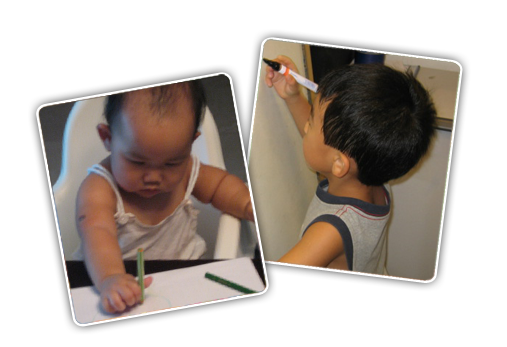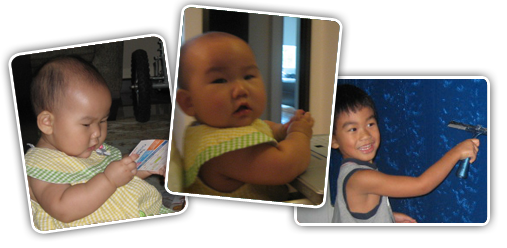Introduction
Handwriting is a complex task which needs to be learnt. Therefore, it is important for children to develop strong pre-writing skills before they move on to writing.
This program will look at various pre-writing skills. These skills will help to prepare your child and lay the foundation for better fine motor abilities. They then progress on to learning to write. These skills can also be applied to older children who are experiencing difficulties with writing.
We need strength and dexterity in the small muscles in our hands to be able to manipulate small objects. Attaining appropriate strength in our upper body and shoulder muscles allow us to steady ourselves and maintain a stable position. With strength in our core muscles, our distal muscles (forearm and hand) are then able to work together to perform fine motor tasks such as manipulating a pair of scissors, handling feeding utensils (fork, spoon, knife) and perform buttoning.

Organizing information correctly from our senses will help us to make sense of what we have in our hands. It is important to know where our hands are, what we feel in our hands, as well as how to move our bodies and hands when we are beading or holding a crayon. Our brains also need to make sense of what our eyes are seeing. These include picking out shapes and letters from a page, having the ability to tell how one shape relates to another, and looking at different shapes or letters and having the ability to recognize the differences.
The pillars to good handwriting are:
1. Posture and Stability
2. Fine Motor Skills
3. Visual Perception
- Spatial Form
- Visual Closure
- Figure Ground
- Visual Discrimination
- Form Constancy
4. Kinesthetic Awareness
5. Ocular Motor Control
KIDZ Tools – Handwriting Program is comprehensive in both its assessment and intervention techniques. All prerequisites that are the foundations for successful handwriting will be assessed and thereafter intervened with both clinical based treatment and compensatory strategies/accommodations.
The foundations needed for handwriting outlined above will be intervened using a sensory integrative approach to assist with the development of the said skill sets. Meanwhile, follow-up activities will be given for home and school based work to assist with generalization of skills worked on clinically. Most important, though, is the equipping of parents and teachers of the knowledge base and principles behind successful handwriting. This will serve to make parents and teachers better facilitators to children with handwriting issues. In doing so, our children will then be supported in the environments where it matters most, in the school and at home.

Who would benefit from the Handwriting Program?
- Individuals who present with issues in: Fine motor dexterity
- Letter formation
- Spacing and legibility
- Writing speed
- Letter reversals
- Poor pencil grasp
- Poor sitting posture
- Excessive tiring while handwriting
Program Objectives
For the Child:
The purpose of this program is to open up opportunities for the child to explore, thus making handwriting less stressful and more fun.
For the Caregivers:
The caregivers will better understand a child's needs in handwriting, and to be well-equipped with the knowledge and examples of home program activities to better assist their child.
Nike footwear | Air Jordan Release Dates 2020